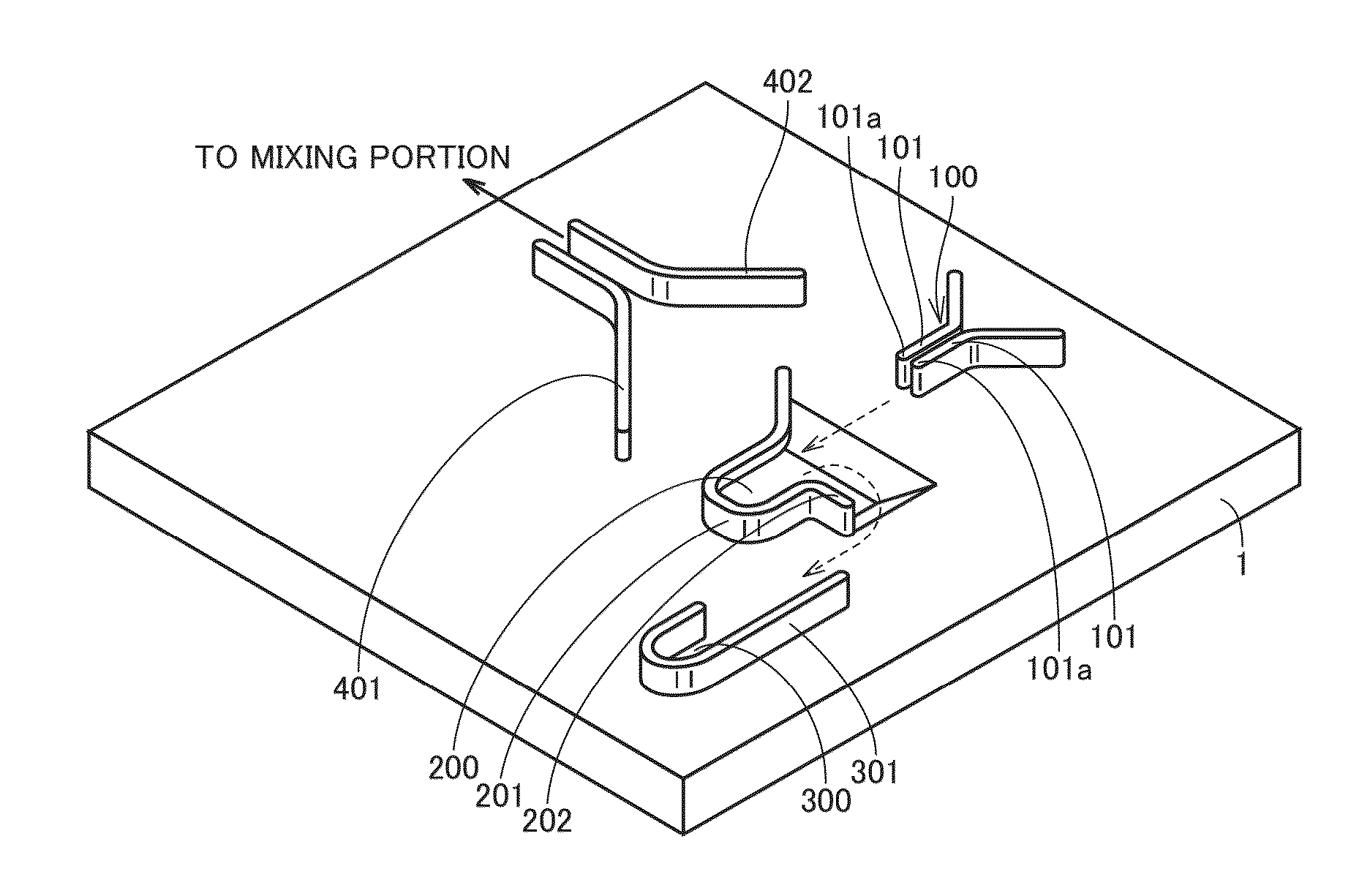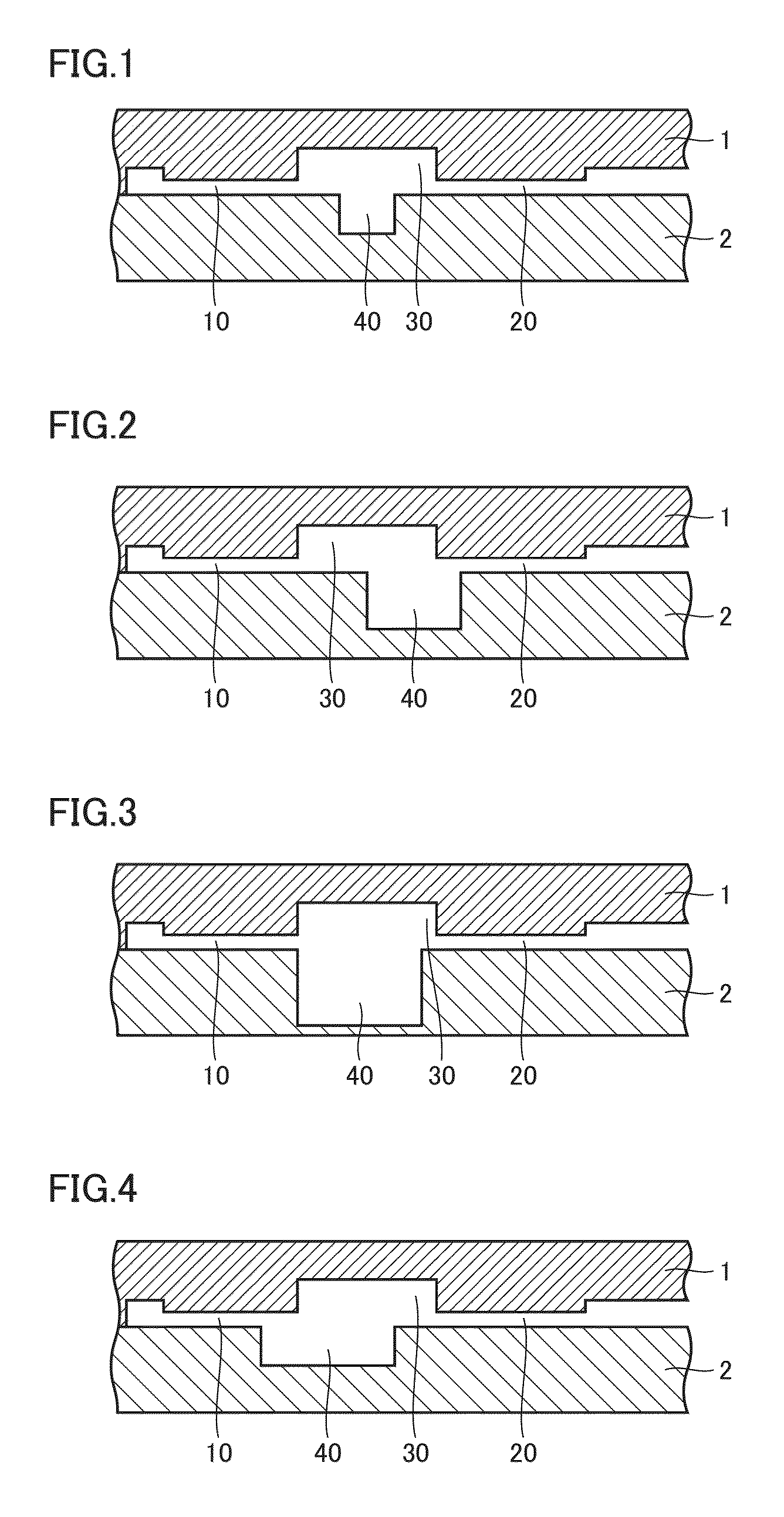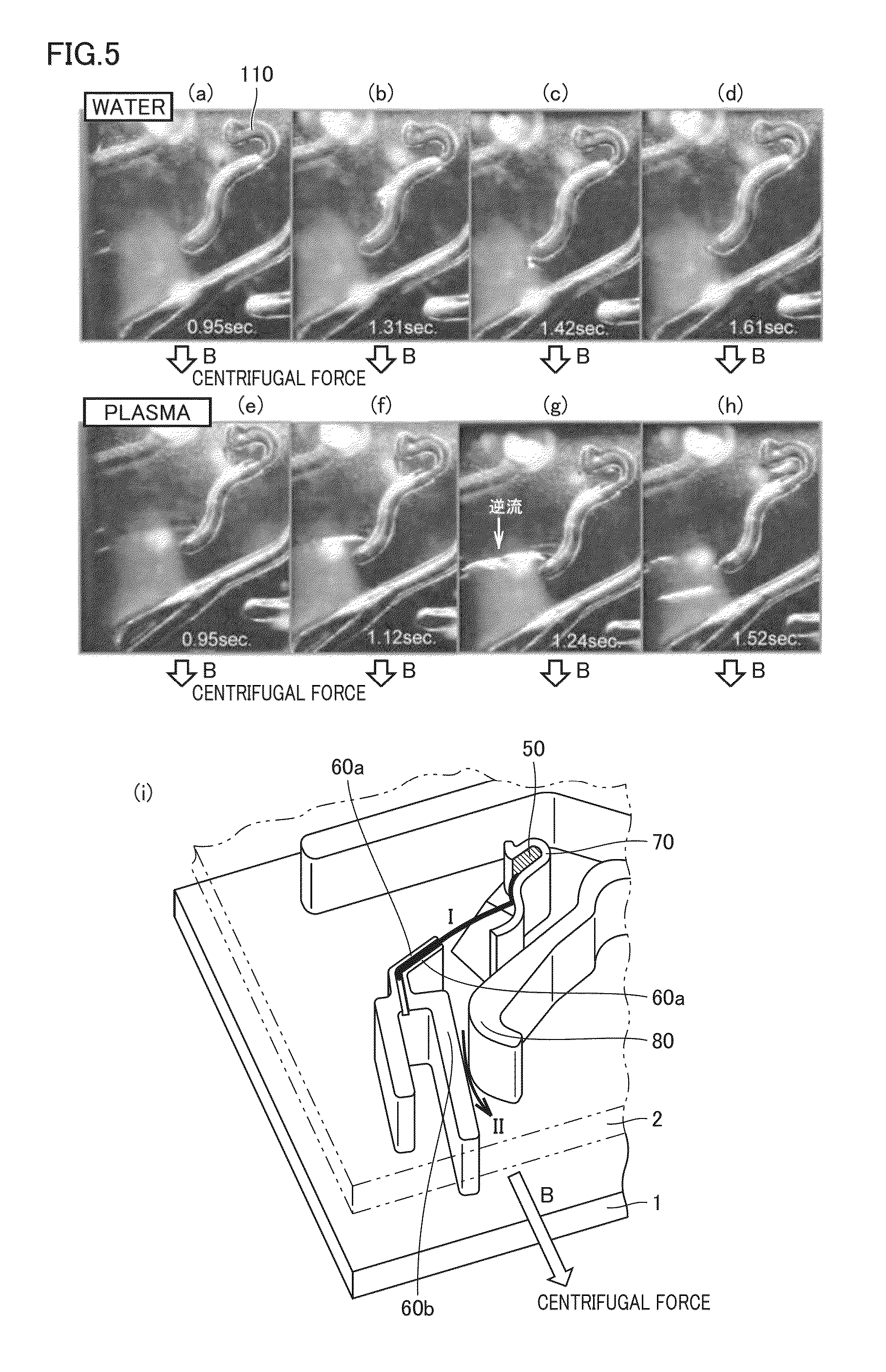Microchip
a microchip and chip technology, applied in the field of microchips, can solve the problems of liquid moving in an unintended direction, and achieve the effects of preventing fluctuation of test or analysis results attributed to a kind of sample, high reliability of test or analysis results, and accurate measuremen
- Summary
- Abstract
- Description
- Claims
- Application Information
AI Technical Summary
Benefits of technology
Problems solved by technology
Method used
Image
Examples
first embodiment
(1) First Embodiment
[0117]FIG. 1 is a cross-sectional view schematically representing one example of a microchip according to the present embodiment. The microchip shown in FIG. 1 is composed of a first substrate 1, which is a transparent substrate, and a second substrate 2 stacked on and laminated with first substrate 1. A surface of first substrate 1 on a side facing second substrate 2 is provided with a plurality of grooves forming a fluid circuit, and the plurality of grooves include a first groove 10 forming a first space, a second groove 20 forming a second space, and a third groove 30 coupling first groove 10 with second groove 20 (laying between first groove 10 and second groove 20). This third groove 30 is a groove forming a space connecting portion.
[0118]First groove 10, second groove 20, and third groove 30 are aligned approximately linearly. Although not explicitly shown in FIG. 1, a base area of third groove 30 is larger than base areas of first groove 10 and second gro...
second embodiment
(2) Second Embodiment
[0138]FIGS. 7 and 8 are cross-sectional views schematically representing examples of the microchips according to the present embodiment. The microchips shown in FIGS. 7 and 8 basically have the same structure as that of the microchip according to the first embodiment other than that a protrusion 45 protruding from a side wall surface of recess 40 on a side of first groove 10 and having such a protrusion length of not allowing an end portion thereof to be in contact with a side wall surface (a side wall surface on a side of second groove 20). The difference between the microchips of FIG. 7 and the microchip of FIG. 8 is whether or not a cavity portion is formed directly under protrusion 45 depending on a manufacturing method of second substrate 2. The structure of the fluid circuit and the function of recess 40 are the same for both microchips. The microchips shown in FIGS. 7 and 8 are improved embodiments of the microchip shown in FIG. 1, and providing protrusio...
third embodiment
(1) Third Embodiment
[0152]FIG. 12 is a perspective view schematically representing one example of characterizing portions (measuring portion, liquid introducing portion, overflow liquid storage, and peripheral portion) of the fluid circuit of the microchip according to the present embodiment. The microchip shown in FIG. 12 is composed of first substrate 1, which is a transparent substrate, and a second substrate, which is an opaque substrate, stacked on and laminated with the surface on which the groove is formed. For clear understanding as to the configuration of the groove of first substrate 1 forming the characterizing portions of the fluid circuit, the second substrate is omitted in FIG. 12 (this applies similarly to FIGS. 13 and 17).
[0153]In the microchip shown in FIG. 12, the fluid circuit includes flow paths composed of: a liquid introducing portion 100 which is a flow rate restricting portion composed of a space (second space) partitioned by a pair of side walls 101, 101 (se...
PUM
 Login to View More
Login to View More Abstract
Description
Claims
Application Information
 Login to View More
Login to View More - R&D
- Intellectual Property
- Life Sciences
- Materials
- Tech Scout
- Unparalleled Data Quality
- Higher Quality Content
- 60% Fewer Hallucinations
Browse by: Latest US Patents, China's latest patents, Technical Efficacy Thesaurus, Application Domain, Technology Topic, Popular Technical Reports.
© 2025 PatSnap. All rights reserved.Legal|Privacy policy|Modern Slavery Act Transparency Statement|Sitemap|About US| Contact US: help@patsnap.com



